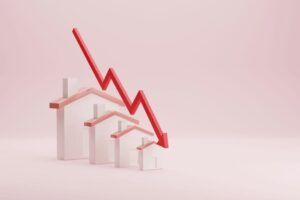High-quality fixed income assets may offer the best return potential in more than a decade along with diversification benefits as a likely recession approaches.
The fixed income market’s massive repricing may offer investors in high quality bonds the potential for equity-like returns with resilience in the face of a likely recession. Here, Richard Clarida, global economic advisor, and Dan Ivascyn, group chief investment officer, review PIMCO’s longer-term market outlook with Kimberly Stafford, global head of product strategy. They discuss why PIMCO is patiently focused on high quality assets, while preparing to pivot over the next few years to more economically sensitive or lower-rated areas of the credit markets.
Stafford: What key forces do you expect to affect economies and markets over the secular horizon of three to five years?
Clarida: We expect more aftershocks after a number of acute tensions disrupted financial markets and set off inflation around the world: a once-in-a-lifetime pandemic and a tidal wave of policy stimulus, the invasion of Ukraine, and escalating U.S.-China frictions. Central banks responded with the sharpest rate increases in 40 years, setting off three of the largest bank failures in U.S. history and the collapse of Credit Suisse in Europe. Taken together, these events may have revealed hidden vulnerabilities in the global financial system.
Stafford: What are the implications for fiscal and monetary policy given high debt levels around the world, tighter credit, and the likelihood of recession?
Clarida: Economic volatility will likely rise in the next five years from the relatively smooth decade before the pandemic. Debt-to-GDP ratios have surged in many countries, limiting the capacity of governments to deploy fiscal stimulus, while central bankers, cognizant of quantitative easing’s (QE’s) contribution to today’s inflation, could offer less support in future downturns. Without massive stimulus to buffer downturns, we believe economic cycles will become more pronounced, with risks skewed to the downside.
Ivascyn: We’ve seen a great deal of credit tightening over the last five quarters. Typically, economies respond to tightening with lags. But with so much consumer and corporate debt locked in at low fixed rates, we think it will take longer this cycle for the effects to be felt. We expect to see policy tightening and bank challenges begin to impact the markets more directly over the next few quarters.
Stafford: Volatility in the fixed income markets has been high, while the equity markets don’t appear to be pricing in an economic downturn. How do you look at the bond market versus the stock market, and how can investors build resilient portfolios?
Ivascyn: The bond market’s massive repricing may allow investors to earn the highest real yields in 12 years without taking uncomfortable risk. High quality bonds offer potential for equity-like returns with less volatility and less downside risk than equities – which is expected to be valuable as we confront the meaningful risks of persistent inflation or a hard landing. To that end, we’re focusing on high quality, less economically sensitive areas of the market, while preparing to pivot when pricing in other areas adjusts to reflect changes in fundamentals. Specifically, over the next few years, we expect to rotate into opportunities in the more economically sensitive or lower-rated areas of the public corporate credit markets, and then into the private markets as they finally begin to reflect true fundamentals.
Stafford: What are our views on credit markets broadly?
Ivascyn: Every credit cycle has excess of some sort. In this cycle, complacency developed as investors reached for yield in a very low-interest-rate environment. Yet the excess leverage, which was historically in the high yield corporate credit market, has migrated over the last decade into the fast-growing senior secured loan and private credit markets. To be sure, today’s traditional high yield market – as well as the investment grade market — have much higher overall credit quality than in the past. In these primarily fixed-rate markets, companies and households were able to lock in record-low interest and mortgage rates during 2020-2021, bolstering their resilience to a slowing economy. The higher-quality areas we are focusing on in the near term are investment grade credit as well as consumer and securitized credit, where you can potentially get additional buffers in the form of subordination, hard collateral, and better documentation.
Stafford: How are you thinking about private credit over the next five years?
Ivascyn: Private credit is among our favorite targets for new capital over the next several years. In the near term, however, we see challenges. The private loan market has grown quickly, in our view. It’s about six times bigger than before the great financial crisis, when large commercial banks stepped away from lending to small and midsize companies. Amid low interest rates, investors reached for yield, pouring capital into this market, leading lenders to become complacent. Now, sharply higher rates and earnings headwinds are challenging many of the borrowers of these floating-rate loans, which are typically smaller, highly leveraged companies.
Nevertheless, we’re beginning to see higher returns and more rational underwriting standards in this space, but we expect this to improve slowly. The degree of stress will likely be a function of how deep the oncoming recession will be. Over the next several years, we expect to see opportunities to provide liquidity directly to performing companies and to buy deeply discounted loans from private debt funds and banks as they may be forced to sell to raise liquidity. A meaningful mismatch in the supply of private capital to address these opportunities should offer the potential for strong returns.
Stafford: How might the massive tightening in central bank policy rates play out globally?
Ivascyn: We expect an end to volatility suppression from global policymakers and a decoupling of global markets as shoring and friend-shoring increase amid geopolitical uncertainty, leading to less-synchronized economic cycles. We’ve already seen this in monetary policy over the last couple of years, when the United States, Europe and the U.K. massively tightened, while China – in a very different stage of its growth cycle – has been easing policy. Japan, of course, is an exception: They still are operating the most subsidized bond market in the world. The divergence in growth cycles across countries can create exciting opportunities for us to flex between public and private markets around the world.
Stafford: What is PIMCO’s outlook for the U.S. dollar?
Clarida: As a reserve currency, the U.S. dollar has tended to be pushed in decade-long waves of overvaluation and then mean reversion. We think this will provide opportunities in the long term to take positions in both emerging- and developed-market currencies against the dollar. In particular, the trend toward friend-shoring global supply chains will likely create winners and losers among countries, currencies, and sectors, and as active managers we find this very attractive.
Stafford: Turning to the commercial real estate (CRE) market, what is your outlook and where do you see opportunities?
Ivascyn: We think commercial real estate is an exciting area for the next five years. As a whole, the commercial real estate market faces steep challenges. But we believe it’s precisely these challenges that will provide the best opportunities to deploy capital in CRE in decades.
In the U.S., regulatory scrutiny, bank failures, and an oncoming recession have pushed traditional lenders to the sidelines, while over the next five years, $2.4 trillion globally in multifamily and commercial real estate loans are scheduled to mature. We believe this will create a range of opportunities for our 300-strong global team of origination, acquisition, and asset management specialists. These include originating new loans to real estate owners needing to finance their upcoming maturities. We will focus on addressing the needs of performing properties that simply have capital structures unsuitable for this higher-rate environment. We anticipate these will offer the ability to extract very attractive terms and covenants, creating tremendous, relatively low-risk opportunities to provide new capital. We also expect increasing opportunities to buy discounted CRE debt from private real estate lenders and banks trying to manage their balance sheets.
In addition to cyclically distressed assets, we believe that with patience private equity investments will look attractive over the next five years. We see the greatest opportunities in properties benefiting from secular themes, including demographics, digitalization and decarbonization. Specifically, we like residential (multifamily, new housing development, and residential-for-rent), industrial, and data centers, which appear well- positioned for the AI revolution.
In contrast, the outlook for certain commercial real estate sectors, such as retail and office, may be more challenging but not uniform across countries and cities. In the office sector, we expect to see a greater number of distressed sales in the U.S. than in Europe and Asia, where most workers have returned to the office. These sales will, in our view, be concentrated in mid- and low-quality structures, while best-in-class assets should weather the storm.
Stafford: Any final thoughts?
Ivascyn: We expect this environment to provide the best opportunities in years for fixed income investing. We’re leveraging PIMCO’s broad and deep global platform across public and private markets to identify opportunities as the credit cycle advances and market excesses are wrung out. In the meantime, high quality bonds pay us to wait as downside risks build in the global economy.














